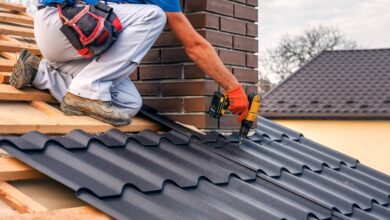How to Finance Your Home Improvement Project
This comprehensive guide explores that how to finance your home and various financing options, helping you make informed decisions.

Home improvement projects can significantly enhance the value, comfort, and functionality of your home. Whether you’re planning a kitchen remodel, bathroom renovation, or backyard upgrade, such undertakings require substantial financial resources. Fortunately, there are numerous ways to finance your home improvement project, even if you don’t have a large sum of cash readily available. This comprehensive guide explores various financing options, helping you make informed decisions tailored to your specific needs and budget.
Why Finance Your Home Improvement Project?
Before diving into the financing options, it’s important to understand why financing your home improvement project can be a strategic move:
- Increased Property Value: Improvements often lead to a higher home resale value.
- Enhanced Living Conditions: Upgrades can improve your quality of life.
- Energy Efficiency: Certain projects can reduce utility bills.
- Tax Benefits: Some loans offer tax-deductible interest.
1. Assessing Your Home Improvement Needs and Budget
Start by identifying the scope of your project. Are you doing a small cosmetic update or a full structural renovation? Create a detailed budget that includes labor, materials, permits, and a contingency fund (typically 10-20% of the total budget). Knowing how much you need helps determine the best way to finance your home improvement project.
2. Financing Options to Consider
Here are the most common and effective ways to finance your home improvement project:
A. Home Equity Loan
A home equity loan allows you to borrow a lump sum against the equity in your home.
- Pros:
- Fixed interest rates
- Predictable monthly payments
- Potential tax-deductible interest
- Cons:
- Your home is collateral
- Requires sufficient equity
B. Home Equity Line of Credit (HELOC)
A HELOC is a revolving line of credit secured by your home. You can draw funds as needed.
- Pros:
- Flexibility in borrowing
- Interest-only payments during draw period
- Cons:
- Variable interest rates
- Risk of foreclosure if not repaid
C. Personal Loans
Unsecured personal loans are a popular way to finance your home improvement project, especially for those without significant home equity.
- Pros:
- No collateral required
- Faster approval process
- Cons:
- Higher interest rates
- Shorter repayment terms
D. Credit Cards
For smaller projects, credit cards can be a quick and convenient financing option.
- Pros:
- Instant access to funds
- Rewards and cashback benefits
- Cons:
- High interest rates
- Can negatively affect credit utilization
E. Cash-Out Refinance
This option involves refinancing your existing mortgage and taking out the difference in cash.
- Pros:
- Lower interest rates compared to personal loans
- Single monthly payment
- Cons:
- Closing costs
- Longer loan term
F. Government Loans and Grants
Government programs such as FHA 203(k) loans and USDA Rural Development loans can help finance your home improvement project.
- Pros:
- Favorable loan terms
- Ideal for low- to moderate-income homeowners
- Cons:
- Strict eligibility requirements
- Lengthy approval process
G. Contractor Financing
Many contractors offer in-house financing or partner with lenders.
- Pros:
- Convenience
- Promotional rates
- Cons:
- Limited options
- May include markups
3. Choosing the Right Financing Option
To choose the best method to finance your home improvement project, consider:
- Your credit score: Higher scores get better rates.
- Loan amount: Larger projects may require secured loans.
- Repayment terms: Choose a plan that fits your budget.
- Urgency: Personal loans and credit cards are faster than mortgage-based options.
4. Improving Your Credit Score Before Applying
A higher credit score can significantly reduce your borrowing costs. To boost your score:
- Pay bills on time
- Reduce outstanding debt
- Check credit reports for errors
- Avoid opening new accounts before applying
5. Estimating ROI of Home Improvement Projects
Understanding the return on investment (ROI) helps in justifying the expenditure. High-ROI projects include:
- Kitchen remodels
- Bathroom upgrades
- Energy-efficient windows
- Deck additions
6. Tips for Budgeting and Managing Costs
- Get Multiple Quotes: Don’t settle on the first contractor.
- Buy Materials in Bulk: Reduces unit cost.
- Plan for the Unexpected: Set aside a contingency fund.
- Track Every Expense: Use budgeting apps or spreadsheets.
7. Tax Considerations
Some home improvement financing options may offer tax benefits:
- Interest on home equity loans may be deductible if used for capital improvements.
- Energy-efficient upgrades may qualify for tax credits.
Consult a tax advisor for personalized guidance.
8. Common Mistakes to Avoid
- Underestimating the budget
- Ignoring loan terms
- Not reading contractor agreements
- Overleveraging your home
9. When to Consider Professional Financial Advice
If you’re uncertain about how to finance your home improvement project, consulting a financial advisor can help:
- Evaluate your financial health
- Compare loan products
- Create a realistic repayment plan
Conclusion
Financing your home improvement project doesn’t have to be overwhelming. By carefully evaluating your needs, understanding your options, and planning responsibly, you can enhance your home without jeopardizing your financial stability. From home equity loans to government grants, the right financing option is out there waiting to bring your dream renovation to life.
Now that you understand how to finance your home improvement project, take the first step by assessing your needs and researching lenders. With the right strategy, your home transformation is well within reach.










